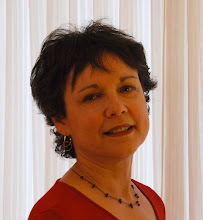As we approach the fall and winter in New England we notice
changes in the weather, light, and temperature.
Our bodies respond to these changes.
There are several things we can do to stay healthy during
the fall and winter to avoid colds, sleep better, and have more stable moods.
LIGHT
Start using a light box for 10-20 minutes each morning at
the beginning of September. The light is
changing. Not only are the days growing
shorter, but also the sun is lower in the sky.
We are preparing for daylight savings time to be over. For some of us, light boxes help the most
during these months of transition, from September to December. For others they
help most during the short days of December through March. I have found the
best light box to be the Verilux Happy Light at www.verilux.com
Vitamin D
We get Vitamin D from sunlight. Most of us in the Northern Hemisphere have
low levels of vitamin D. It is
recommended that we take 1,000 mg vitamin D per day, for both men and
women.
Nasal Dryness
Our noses are exposed to much dryer air in fall and
winter. Nasal irrigation daily with a
mild saline solution can help with nasal congestion and can help prevent
colds. A neti pot works well, as do similar products you will find at CVS and
Walgreens. Use distilled water only.
Skin
Dry skin, itchiness, and reactions to dry skin can be
prevented by using a light moisturizer after you shower or bathe. Feels good and your skin will be happy.
Feet
Wearing shoes that have a good heavy sole will help in
slippery weather. Keep your feet happy
with moisturizing and using a foot file on rough heals.
Keeping Active
There are many ways to be active during fall and
winter. Physical activity has been
associated with reduced depression and anxiety, as well as improved cognitive
functioning and mood.
Walking outdoors except in extreme
weather can be continued throughout the winter.
Yak Trax, sold at EMS and REI, are great for walking in icy streets and
sidewalks. Trekking poles with tips for
city walking will help with balance and also will give you an upper body
workout.
The MagneTrainer is a mini-bicycle
that can be used indoors in bad weather for both legs and upper body; an
inexpensive alternative to bigger and more cumbersome exercise equipment.
Nia is a great, fun, indoor
activity that will keep you active and energized. See www.niaboston.com
for classes, teachers, and locations.
There are classes at Laughing Dog Yoga
www.ldyoga.com right next door to my office on Linden Street
and at Fitness Club for Women across the street.
Join a gym. I have also referred people to Fitness Together for one to one personal training.
Join a gym. I have also referred people to Fitness Together for one to one personal training.
Hydration
8 glasses of hot or
cold water, herbal tea, or diluted fruit juices each day will keep you well
hydrated and will help with energy, skin, digestion, reducing cold symptoms, and
will prevent headaches. I drink a glass
of Emergen-C with 12 ozs of water—it gives me my daily vitamin C and electrolytes each day. I also drink diluted apple cider vinegar (the unfiltered kind, Bragg's, can be found at Whole Foods. This is a refreshing drink and is a tried and true folk remedy for overall health.